The American Bulldog is part watchdog, part lap dog, part gentle giant. Although they look like they can barrel through a concrete wall, American Bulldogs are one of the most affectionate family dogs you can ask for. This breed has come a long way from their bull-baiting days and now make lovable, lively companions!
American Bulldog Physical Characteristics
The trait that defines the American Bulldog is its muscular yet compact frame. Sculpted muscles cover the legs, hindquarters, chest, neck, and shoulders, giving the dog a powerful look. The body is always slightly longer than the tail, though the tail is sometimes docked short. The natural tail is thick at the base and tapers to a point.
Because they were originally bred for cattle catching and bull-baiting, American Bulldogs needed to have very large heads. Breeders amplified this trait through generations of careful selection, and so the American Bulldog still has a large, square head today. Like their heads, this dog's muzzle is also broad and square. They have powerful, well-defined jaws that contribute to their muscular look.
Their eyes are either round or almond-shaped and can be brown, hazel, gray, or blue, but brown is most common to the breed. The ears typically fold forward in a flap. The American Bulldog has pendulous lips, meaning they hang loosely from the sides of the mouth.

American Bulldog Size
Like with most breeds, gender influence the size of the American Bulldog. Males typically grow 22-27 inches tall and weigh 70-120 pounds. Females can reach 20-26 inches tall and weigh 60-100 pounds. Males are visibly larger and stockier than females.
American Bulldog Personality
The American Bulldog temperament is renowned for its bravery and confidence. They are very loving and protective of their owners and will only display aggression towards suspicious strangers or perceived threats. Their alertness and dedication to their family make them excellent watchdogs. American Bulldogs are very family-oriented and are especially fond of children. The breed loves being involved in family events and seems to enjoy the company of multiple people.
Are American Bulldogs Considered Aggressive?
American Bulldogs are stout, strong beasts that can do more to an intruder than scare them off. This breed has the unique ability to be taught what a threat is and what is just the mailman. Start your Bulldog on basic obedience training like sitting for a treat, potty training, and socializing when they are less than six months old. After six months, you should get a pretty good idea of your pet's personality, and trust us, American Bulldogs have plenty of that!
American Bulldog Exercise
An American Bulldog should receive 1-2 hours of exercise daily! A daily walk of at least 45 minutes, plus additional off-leash activity or play, will keep your pup from getting bored and gaining weight. Walks should be kept at a moderate pace; a slow walk will not be sufficient. Puppies should avoid strenuous exercise until they are finished growing (between 12-15 months) because they risk injuring their growing bones. You can start exercising puppies when they are three months old by taking them on brief, 10-15 minute walks.
Related Article: Expert Tips for Ensuring Your Dog Walks Are Trouble-Free
Because this breed is brachycephalic (meaning they have short muzzles), their airways are more constrained than other breeds. Due to this, it's common for these dogs to have issues cooling themselves down. Therefore, you should be sure to give your American Bulldog frequent breaks during exercise to ensure they don't overheat.

American Bulldog Training
When training your Bulldog, always make sure you reward them with lots of affection, treats, and even play. Play rewards work well for American Bulldogs because it burns some of their energy while supplying positive reinforcement. It's also best to begin to socialize your American Bulldog when they are a puppy to reduce future aggressive tendencies. Take your Bulldog to public places, let strangers pet them, and show kindness to other dogs and people in their presence.
American Bulldog History
The American and English Bulldog share the same ancestry. When English immigrants crossed the pond in the 17th century, they brought their working dogs (English Bulldogs) to guard and catch cattle. These Bulldogs were bred with other working dogs to make a dog that could perform hard agricultural work with ease. The result was the hardy, diversified American Bulldog.
The breed became particularly popular in the Southern states for its ability to bring down feral hogs. Their ferocity made them the prime choice for bull baiting, which was a bloody sport that involved a dog (usually a bully or terrier breed) antagonizing a bull for the sake of show.
During World War II, a couple of dedicated breeders like John D. Johnson and Alan Scott devoted themselves to propagating the full blood American Bulldog line. As a result, the American Bulldog population rebounded from their previously dwindling numbers with several distinct bloodlines that can still be traced today.
American Bulldog Health Problems
American bulldogs are at risk for some health problems. Keeping your Bulldog at a healthy weight, sticking to a regular exercise routine, and checking in with the vet will go a long way in preventing some of these issues.
Elbow or Hip Dysplasia
Dysplasia occurs when abnormalities in connective structures, like the hip sockets or elbow joints, interfere with your Bulldog's movement. Treatments for this condition include weight loss, exercise reduction, pain management, and dietary choices that promote joint health.
Ichthyosis
Ichthyosis is a genetic skin condition that results from a recessive gene mutation. It causes the first layer of your dog's skin to develop incorrectly, resulting in rough flakes covering the epidermis. Ichthyosis can be treated with medicated shampoos and creams, but it's not curable. The condition worsens with age. Always ask the breeder about the incidence of ichthyosis in your dog's line before adoption.
Cherry Eye
Cherry eye affects the tear gland that sits in the corner of your dog's eye. In American Bulldogs, this gland can flip out of position and become red and swollen, giving the appearance of a cherry perched in the corner of the eye. Once the gland becomes displaced, the best treatment is to suture it back into place.

How To Care For An American Bulldog
Your Bulldog is sure to be your best friend, so keeping them happy and healthy is a top priority. Thankfully, caring for an American Bulldog is quite easy once you get in the swing of their substantial exercise routine. Remember to socialize your Bulldog and always take them to the vet for periodic checkups. Your local veterinarian can diagnose issues in their early stages if you check in regularly.
Nutrition and Feeding for American Bulldog
Feeding differs for adults and puppies. American Bulldog puppies should eat twice as much as adults. When puppies are under 4 months old, they should eat about 3 cups of large breed puppy food a day, split into 4 meals. When they are between 4 and 6 months old, you can reduce the amount of food to 2 cups a day, split into 3 meals. Once the puppies reach 6 months of age, you can begin feeding them an adult diet. Adults eat 1.5-2 cups of food a day in 2 meals.
American Bulldogs do well on a high protein, low-carb diet. The protein preserves their muscles, and the small carb scarcity prevents them from gaining weight. Every dog has their own individual preferences, so you may have to try a few different types of food to find the one that agrees with their body and taste. Just be sure to choose brands that provide quality ingredients.
Related: Organic Dog Food Vs. Non-Organic [In-Depth Comparison]
This breed is prone to obesity, so it's important to monitor their weight. Since the breed can have a bulky appearance, one way to test their health is by wrapping your hands around their midsection and feeling their ribs. If you can feel their ribs without having to squeeze very hard, they are likely at a good weight!
Coat Color And Grooming
The American Bulldog can come in various colors: white, brindle, fawn, brown, red, or white, just to name a few. Blue merle, solid black, and multicolored coats will disqualify an American Bulldog from a show, but the colors are still common to the breed. The coat grows no longer than an inch and it's stiff or coarse to the touch.
This breed is truly easy to groom - just brush their coat with a firm bristle brush a couple of times a week. Brushing will remove excess hair and stimulate their skin to produce protective oils. This breed sheds moderately, but the fur is short and shouldn't be too much of a hassle. Trim their nails once a month and brush their teeth every day to prevent any dental disease. Be sure to check their ears every week for wax buildup and signs of infection (redness or foul odor).
#1 Veterinarian Recommended CBD Dog Shampoo - Made By Holistapet
Does This Breed Smell?
The American Bulldog carries a stench original to its breed, but that doesn't mean it's a bad smell. Considering its iconic, floppy face, this breed has a lot of potential to smell worse than others. Each of those wrinkled folds may carry bacteria that can fester, causing a pungent odor. After deep cleansing, seek out a veterinarian for other options if the smell persists. Of course, the upkeep of your beloved catch dog is dependent on you and how often you bathe them.
Children And Other Pets
American Bulldogs are famous for loving young children. Why this is the case, no one knows for sure. It might have to do with size or the American's Bulldog's fondness of acting silly (much like children). Whatever the reason, you certainly don't have to worry about your dog being a menace to children.
One thing to keep in mind is this breed's tendency to jump on people. Not all Bulldog's jump out of excitement, but if your dog is a jumper, they could easily knock over a small child and cause an injury.
This breed can be territorial or aggressive with other dogs if not properly socialized. This trait stems from their protective nature, but it can be mitigated through proper training and socialization. Socialize your Bulldog as soon as you bring them home, and keep them on a leash around other dogs if they display signs of aggression.
Related: Dog Aggression: How to Calm with Cannabidiol
American Bulldog Cost
You can expect to pay anywhere between $1,500 to $30,000 in the United States for a purebred American Bulldog. To put that in perspective, that's almost twice the average price range of one of the most popular dog breeds in the US — the Labrador Retriever. AKC-registered labs go for around $800 to $1200, depending if it's a puppy or full grown American Bulldog. Below is a brief list of other popular dogs in the US and their respective price:
- Dachshund: $300 to $1,000
- Beagle: $800 to $1,500
- German Shepherd: $500 to $3,000
- Rottweiler: $1,000 to $1,500
Rescue Groups
The American Bulldog Rescue is a nonprofit organization that helps rescue American Bulldogs all over the eastern United States. Completely led by volunteers, this rescue maintains a network of foster homes that provide shelter for abandoned or neglected Bulldogs until they find forever homes. The group has been working diligently since 1999 and has rescued over 1000 Bulldogs.
In California, the California American Bulldog Rescue searches far and wide to find homes for rescued bulldogs. The organization is part of the larger Rescue Me! network that helps rescue dogs of other breeds find homes all over the world. Over 15,000 American Bulldogs have been adopted through the California American Bulldog Rescue to date.
Google "Bulldog rescue" for local organizations in your area. Many rescues dedicate themselves to helping not only American Bulldogs, but other bully breeds like the Bull Terrier, English Bulldog, American Pit Bull Terrier, and French Bulldog.

Breed Organizations
The American Bulldog Association is a breed registry for American Bulldogs. Established in 1989, The ABA validates American Bulldogs for show and breeding purposes and also hosts shows of their own. The organization provides guidelines for the best show qualities.
The Bulldog Club of America formed over a century ago in 1890, shortly after the English brought their bulldogs to America. The club maintains breed standards by stimulating interest in American Bulldogs and working for the welfare of breeders across the nation. The BCA also advocates for animal rights and runs its own nonprofit rescue.
Related: American Staffordshire Terrier Breed Temperament & Personality
More About American Bulldogs Breed
Did you know that American Bulldogs can jump 6 feet or higher? Owners should have adequate fencing to keep this breed safely enclosed. Also, their pendulous lips cause them to drool a lot, so don't be surprised when they try to give you a big wet kiss or begin to slobber.
The American Kennel Club recognized the American Bulldog in 1886, and the United Kennel Club recognized them more than a century later in 1999. You can recognize one in your own household soon, if you're on the lookout for a lively companion to brighten your life.
Final Thoughts — American Bulldog
American Bulldogs are fun-loving little beasts full of spunk and character. Though they may be hard to handle, they are relatively easy to train. With just a little attention and consistent guidance, you'll have a pooch fit for a smooch! In fact, owners of this breed are often thrilled by their intelligence, protective behavior and their smart demeanor. With persistence and lots of love, the American Bulldog may be just right for you and your family.
Read Next: Why Flaxseed Is Extremely Important for Dogs [Detailed Nutrition Guide]

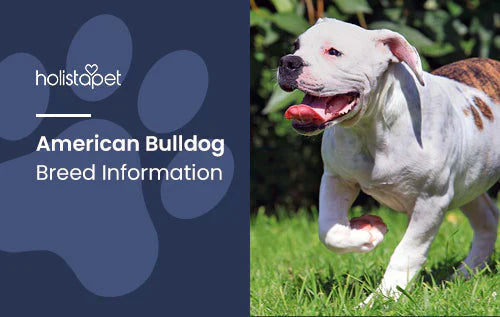
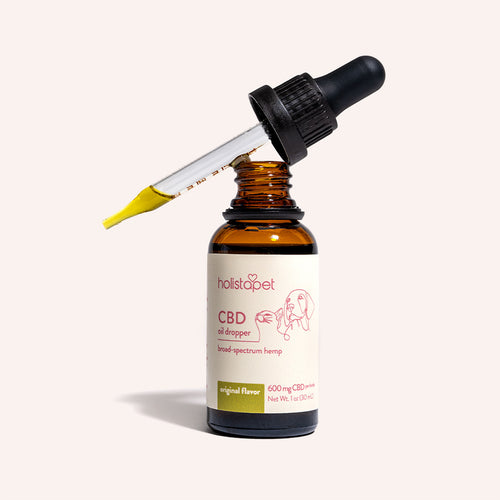 CBD Oil for Dogs - Fast Acting
CBD Oil for Dogs - Fast Acting
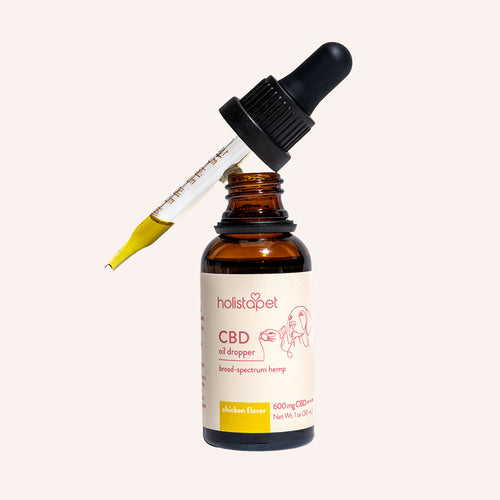 Chicken Flavored CBD Oil For Dogs - Easy Dose
Chicken Flavored CBD Oil For Dogs - Easy Dose
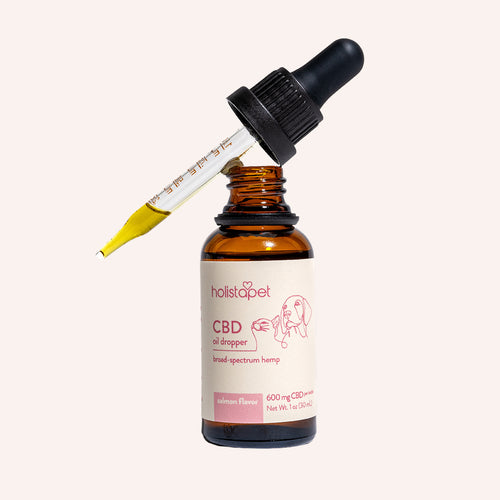 Salmon Flavored CBD Oil For Dogs - Highly Rated
Salmon Flavored CBD Oil For Dogs - Highly Rated
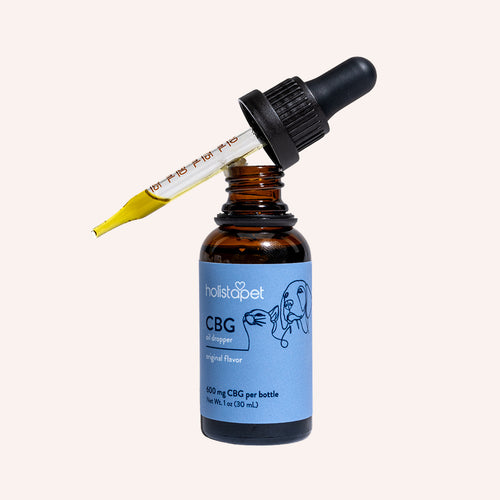 CBG Oil for Dogs and Cats - Loved by Thousands
CBG Oil for Dogs and Cats - Loved by Thousands


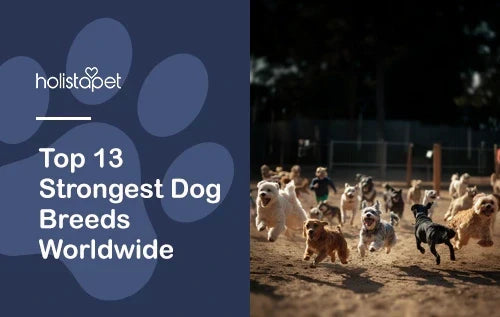


Leave a comment
All comments are moderated before being published.
This site is protected by hCaptcha and the hCaptcha Privacy Policy and Terms of Service apply.